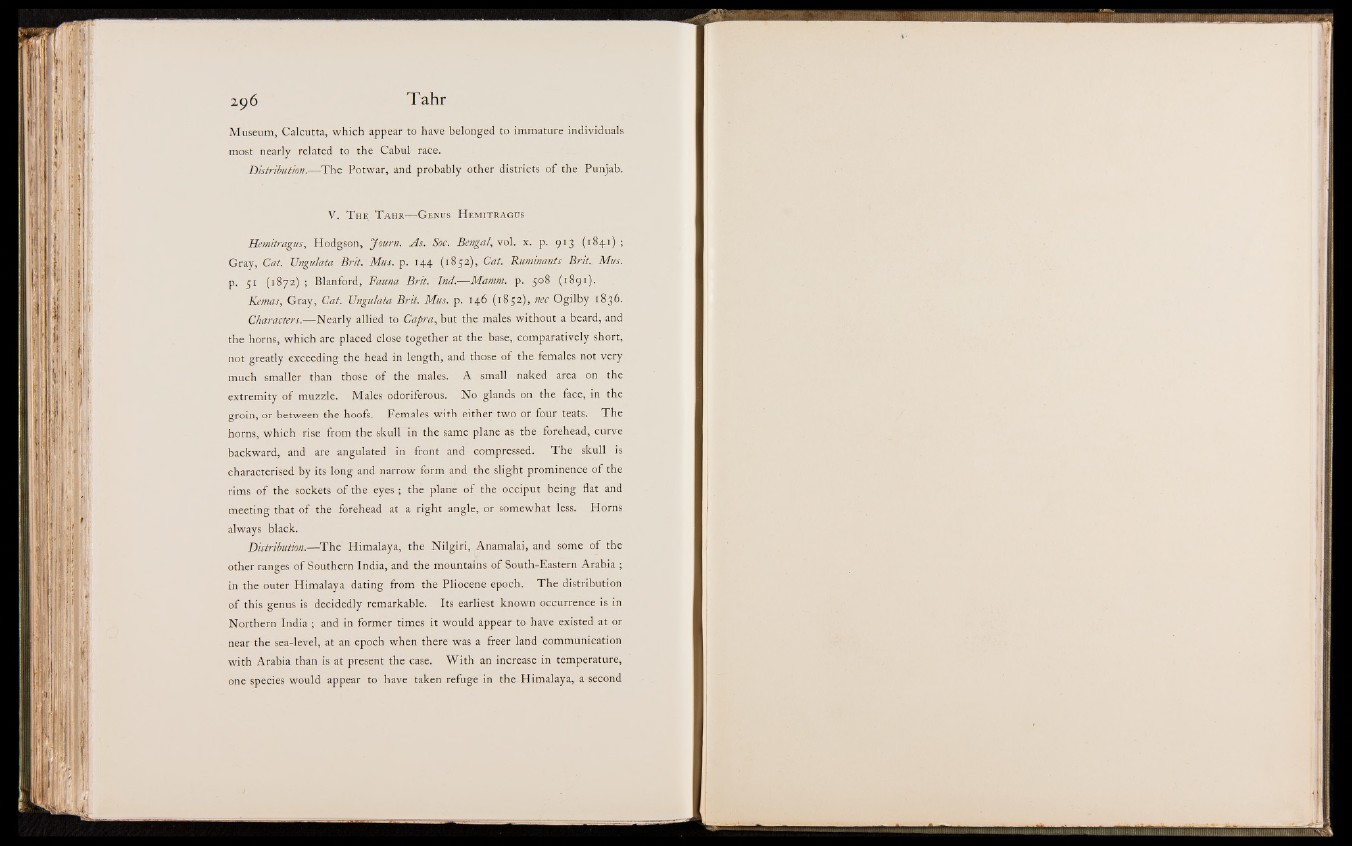
2,96 Tahr
Museum, Calcutta, which appear to have belonged to immature individuals
most nearly related to the Cabul race.
Distribution.^—The Potwar, and probably other districts of the Punjab.
V . T he T ah r— G enbs H em it r a g u s
Hemitragus, Hodgson, Journ. As. Soc. Bengal, vol. x. p. 913 (1841) ;
Gray, Cat. TJngulata Brit. Mus. p. 144 (1852), Cat. Ruminants Brit. Mus.
p. 51 (1872) ; Blanford, Fauna Brit. Tnil^—Mamm. p. 508 ( 1891 )-
Kemas, Gray, Cat. TJngulata Brit. Mus. p. 146 (1852),nec Ogilby 1836.
Charactersl^JJearly allied to Capra, but the males without a beard, and
the horns, which are placed close together at the base,.comparatively short,
not greatly exceeding the head in length, and those of the females not very
much smaller than those of the males.- A small naked area on the
extremity of muzzle. Males odoriferous. No glands on the face, i|| the
groin, or between the hoofs. Females with either twp or four teats, The
horns, which rise from the skull in the same plane as the forehead, curve
backward, and are angulated ■ in front and compressed. The skull is
characterised by its long and narrow form and the slight prominence of the
rims of the sockets of the eyes ; thé plane o f the occiput being flat and
meeting that of the forehead at a right angle, or somewhat less. Horns
always black.
Distribution.—The Himalaya, the Nilgiri, Anamalai, and some; of the
other ranges of Southern India, and the mountains of South-Eastern Arabia ;
in the outer Himalaya dating from the Pliocene epoch. The distribution
of this genus is decidedly remarkable. Its earliest known occurrence is in
Northern India ; and in former times it would appear to have existed at or
near the sea-level, at an epoch when there was a freer land communication
with Arabia than is at present the case. With an increase in temperature,
one species would appear to have taken refuge in the Himalaya, a second